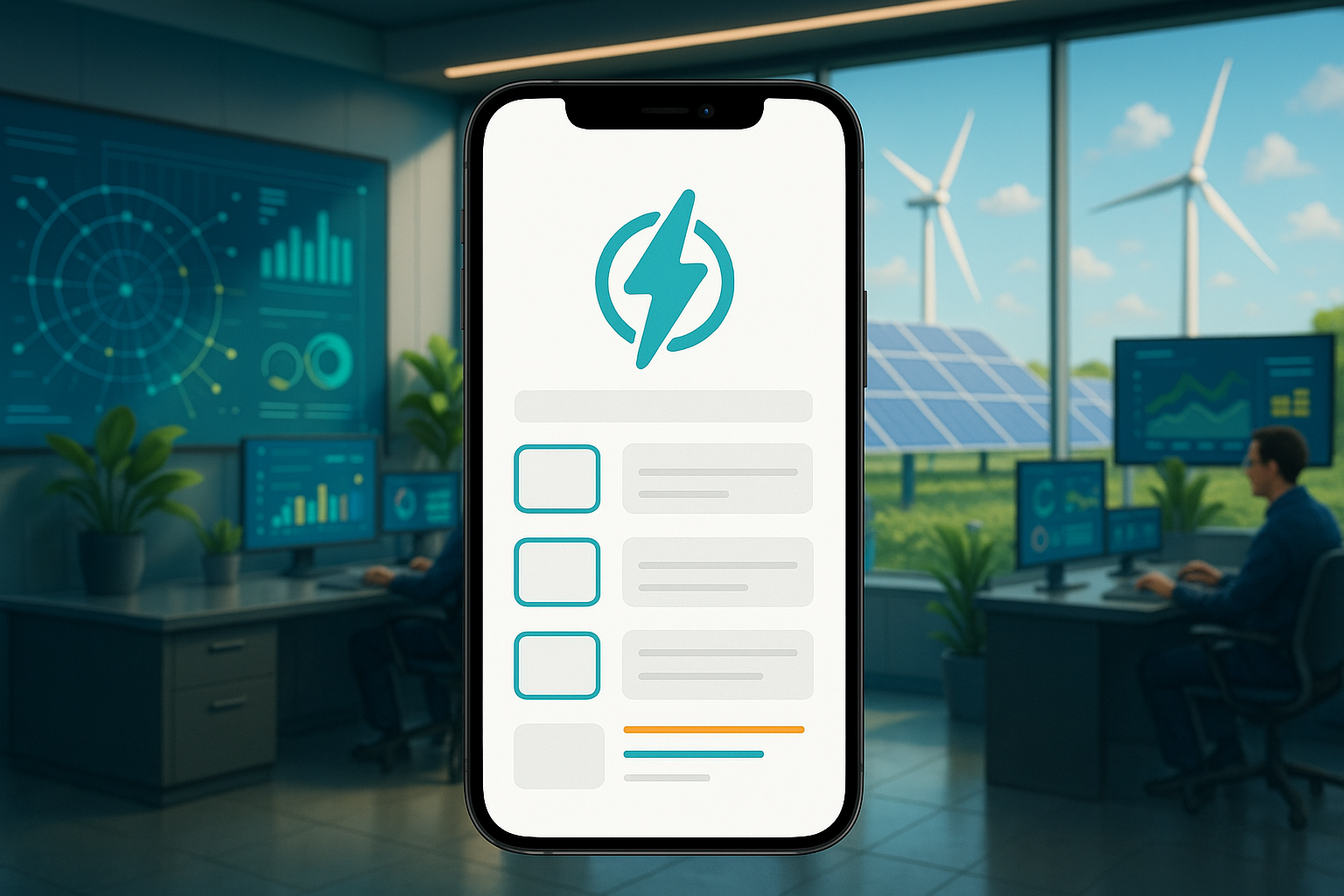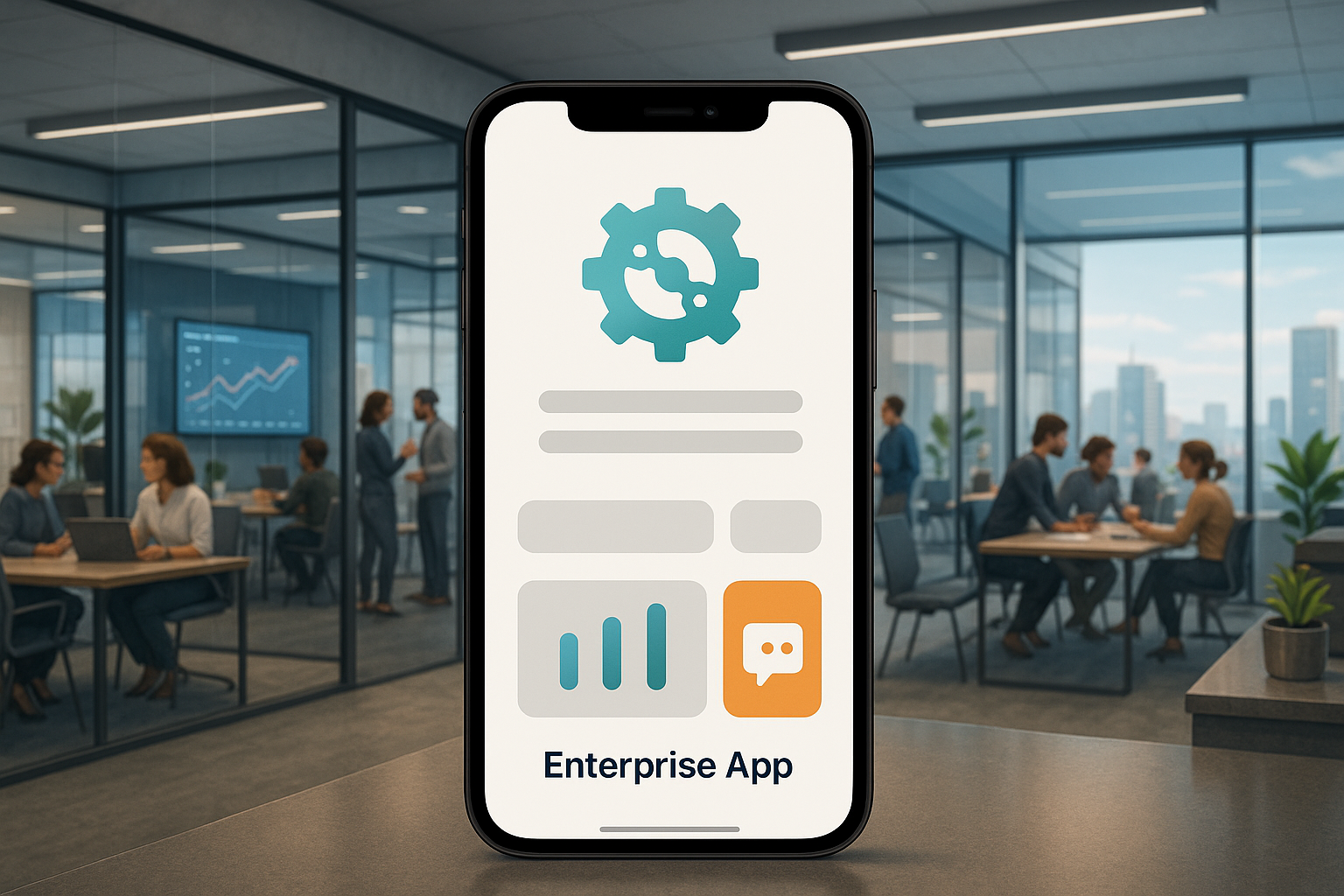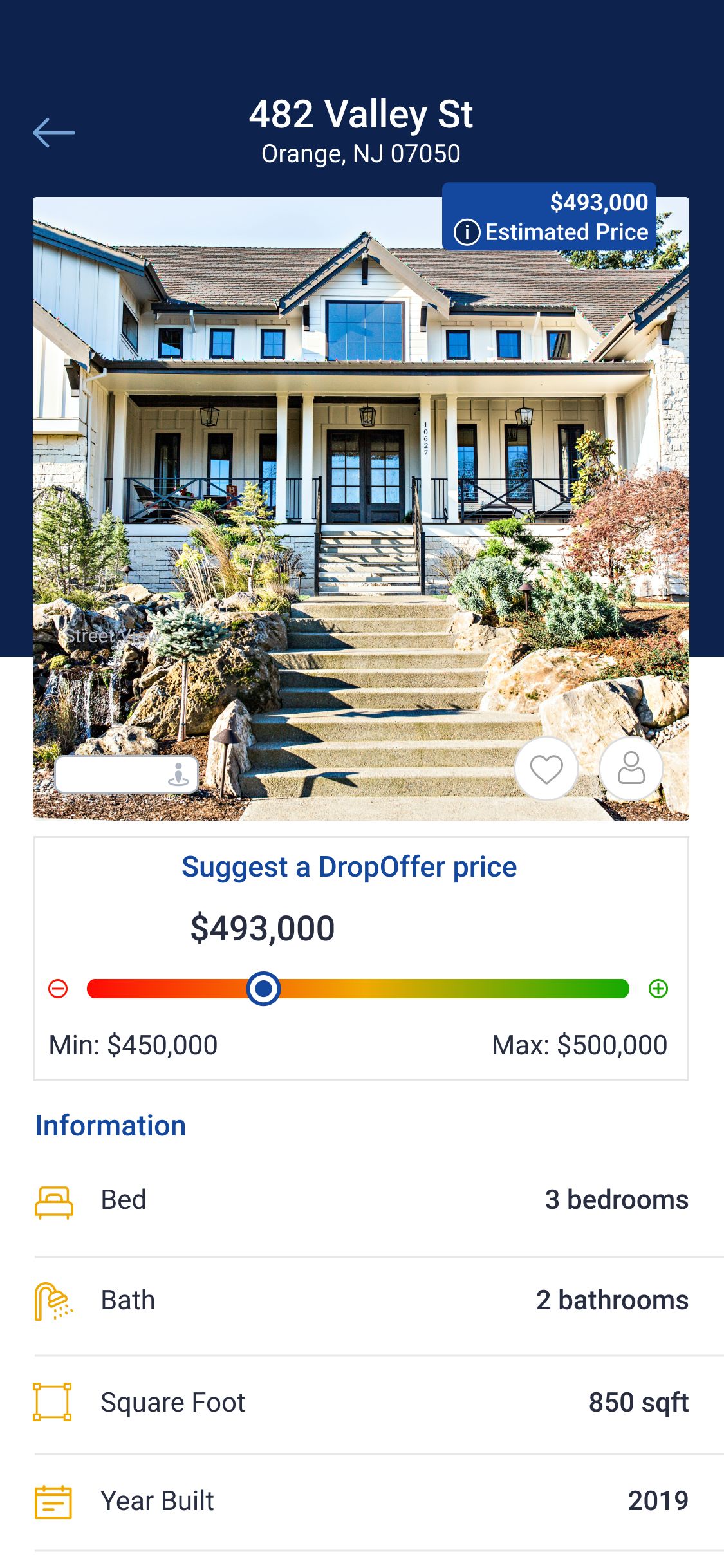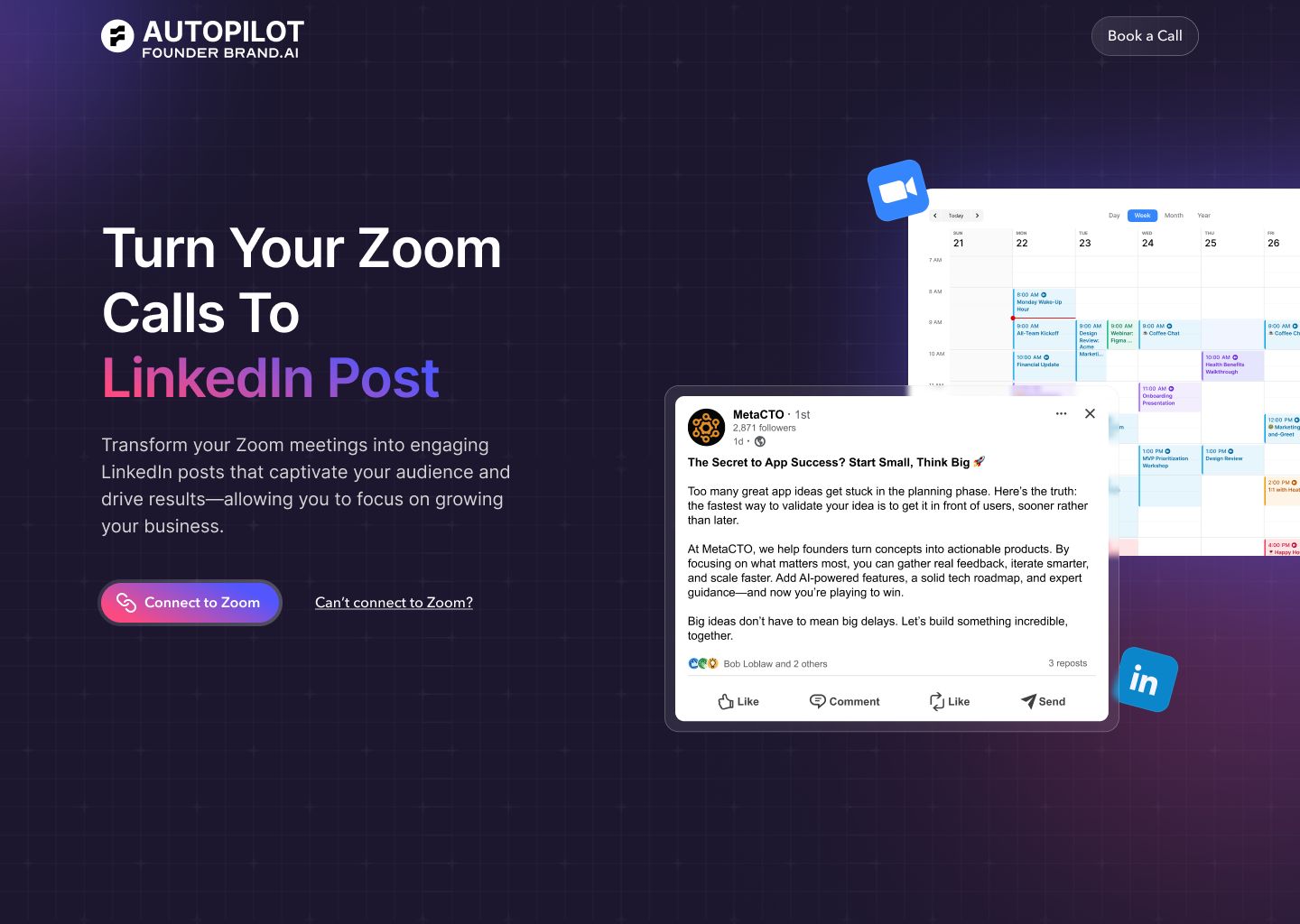The Future is Electric: Navigating the Complexities of Energy App Development
The global energy sector is in the midst of a profound transformation. Driven by the urgent need for sustainability, the world is shifting towards renewable sources, smarter grids, and greater efficiency. At the heart of this transition lies technology. From managing the intermittency of wind and solar power to empowering consumers to control their usage, software and mobile applications are no longer optional—they are the critical infrastructure enabling a cleaner, more resilient energy future.
However, developing a robust, scalable, and secure energy application is a formidable challenge. The industry is fraught with unique complexities, including massive investment requirements, a rapidly evolving policy landscape, and the need to integrate cutting-edge technologies like AI and IoT. Building an effective energy app requires more than just coding skills; it demands deep domain expertise, a strategic understanding of market dynamics, and a proven ability to build systems that can scale and adapt.
This article serves as a comprehensive guide to energy app development. We will explore what constitutes an energy app, dissect the significant hurdles of building one in-house, outline the various application types, and provide a realistic look at development costs. Most importantly, we will introduce the leading development firms that possess the specialized skills to bring your project to life.
As a top US AI-powered mobile app development agency, we at MetaCTO have over two decades of experience transforming complex ideas into successful, market-ready applications. We understand the unique challenges of the energy sector and are here to provide the expert guidance and technical horsepower needed to build, launch, and grow your app.
What is an Energy App?
At its core, an energy app is a software application designed to monitor, manage, or control the production, distribution, or consumption of energy. These are not simple utilities; they are sophisticated digital tools that often leverage real-time data, analytics, AI, and IoT connectivity to solve specific problems within the energy value chain. They serve a wide range of users, from individual homeowners and EV drivers to large-scale utility operators and renewable asset managers.
The scope of an energy app can vary significantly, but they generally fall into a few key categories based on their primary function:
- Monitoring and Analytics: These apps provide users with real-time insights into energy systems. For a utility operator, this could be a dashboard visualizing operational data from solar panels, wind turbines, and battery storage components. For a business owner, it might be an app that offers analytics on a building’s lighting systems to improve cost efficiency.
- Control and Automation: Many energy apps empower users to take direct action. A home management app, for example, allows a user to remotely adjust their climate control, while a scalable lighting control system can offer automated controls for lighting and other energy-intensive operations based on preset rules or real-time conditions.
- Service and Access: This category includes apps designed to connect users with energy-related services. The most prominent example is an EV charging app, which helps drivers locate verified and available charging stations, solving a critical pain point in the electric vehicle ecosystem.
- Compliance and Reporting: In a heavily regulated industry, some apps are built specifically to support compliance. These tools can automate emissions tracking, manage audit documentation, and ensure alignment with industry standards like ISO 27001 or NERC CIP.
Ultimately, an energy app acts as the digital interface between users and the complex physical infrastructure of the energy grid. Whether it’s empowering a homeowner to manage their smart thermostat or providing a grid operator with the predictive analytics needed to prevent downtime, these applications are essential for creating a more efficient, sustainable, and user-centric energy landscape.
Reasons It Is Difficult to Develop an Energy App In-House
Embarking on an energy app development project with an internal team can seem like a cost-effective path, but it often conceals deep-seated challenges that can lead to delays, budget overruns, and a subpar final product. The energy sector’s unique nature amplifies the typical difficulties of software development, making a specialized partner invaluable.
Navigating Sector-Specific Technical Complexity
The modern energy grid is a complex web of variable inputs and outputs. One of the greatest technical hurdles is managing the intermittency of renewable generation. Solar and wind power are not constant, and building a system that can balance this variability with energy storage solutions like batteries and smart grids requires sophisticated architectural decisions. An in-house team without direct experience in this domain may struggle to create a reliable and performant platform.
Furthermore, the industry is pushing to decarbonize “hard to abate” sectors with green molecules. This requires investment in and integration of technologies focused on green hydrogen, biofuels, and Carbon Capture Use and Sequestration (CCUS). Software platforms must be designed to support these emerging technologies, a task that demands forward-thinking architecture and specialized knowledge that is rarely found in generalist development teams.
The Immense Scale of Investment and Infrastructure
The energy transition requires staggering levels of investment. Tripling the world’s installed renewable capacity to 11,000 GW by 2030 necessitates investing more than €650 billion annually in grids alone. Software developed for this sector cannot be a short-term solution; it must be built for massive scale and longevity.
Expert development firms build systems on flexible, cloud-native platforms that allow for asset expansion and system evolution. They utilize reusable architectures and proven workflows to ensure the software can grow alongside the physical infrastructure. An in-house team may inadvertently build a system with architectural limitations that become prohibitively expensive to overcome as the business scales.
The Shifting Regulatory and Policy Landscape
Public policy is a primary driver of the pace and direction of sustainable energy development. Subsidies, permits, and targets directly influence investment channels and project feasibility. This creates a complex and region-specific regulatory environment that software must accommodate.
Top development firms in the renewable energy sector are fluent in these requirements. Teams familiar with standards like ISO 27001 (information security) and NERC CIP (critical infrastructure protection) bake compliance into the development process from day one. For an in-house team, navigating these regulations is a steep learning curve that can introduce significant project risk and delay go-live timelines.
The Challenge of Acquiring and Retaining Specialized Talent
Building an energy app requires a unique blend of skills. You don’t just need software engineers; you need engineers with energy-sector fluency. A background in renewables, utilities, or green infrastructure leads to better architectural decisions and user alignment. Finding, hiring, and retaining individuals with this dual expertise is incredibly difficult and expensive.
Partnering with an agency like MetaCTO gives you immediate access to a vetted, high-performance team. We have the technical depth and strategic experience to act as an extension of your internal team, reducing rework and building momentum faster. This approach helps you avoid the lengthy and costly process of building a specialized team from scratch. Our Fractional CTO services, for example, provide the high-level technical leadership necessary to build a roadmap that aligns technology with your core business goals.
Different Types of Energy Apps
The term “energy app” encompasses a diverse range of applications, each tailored to a specific use case and audience. These tools are becoming increasingly essential for managing everything from individual homes to national power grids. Based on current market offerings, we can identify several distinct types.
Scalable Lighting Control Systems
More than just a remote switch, these advanced systems are designed for commercial and industrial settings where lighting represents a significant operational cost. These apps provide a centralized platform for real-time monitoring, offering detailed analytics on energy consumption and performance. They empower facility managers to implement innovative and sustainable lighting solutions through automated controls. For example, the system can be programmed to adjust lighting based on occupancy, time of day, or ambient light levels, drastically improving cost efficiency. Critically, these platforms often extend their capabilities to monitor and control other energy-intensive operations, making them a comprehensive building management tool.
EV Charging Apps
As electric vehicles become more common, the problem of “range anxiety” is being replaced by “charger anxiety”—the fear of arriving at a charging station only to find it faulty or occupied. EV charging apps directly address this issue. A key feature is providing access to a network of 100% verified chargers, ensuring reliability. These apps solve the frustrating issue of locating a functional station by providing real-time availability status. To be truly effective, they must cater to all EV types, including scooters, bikes, autos, and cars, creating a seamless and dependable charging experience for every user.
Home Energy and Security Management Apps
For the modern homeowner, energy management is often part of a larger smart home ecosystem. These apps empower users to take control of their domestic environment in a holistic way. While they include core energy functions like climate control, their true power lies in integration. Users can manage their home’s rooms and areas comprehensively, encompassing security systems, smart door locks, and more. This consolidation provides convenience and allows for smarter automation, such as adjusting the thermostat automatically when the security system is armed.
Renewable Asset Management and Predictive Maintenance Platforms
For operators of solar farms, wind turbines, and battery storage facilities, these applications are indispensable. They aggregate and visualize operational data from disparate assets into a single, unified dashboard. These tools monitor energy production in real time, flag anomalies, and benchmark system output against forecasts. Their most valuable feature is often predictive analytics. By using models to detect the earliest signs of component failure, operators can schedule repairs proactively, avoiding costly, unplanned downtime and increasing the overall uptime of their assets.
Compliance and Reporting Tools
The energy sector is bound by a web of local, national, and international regulations. Specialized apps help operators navigate this complexity by automating compliance tasks. These built-in tools support emissions tracking, audit documentation, and alignment with industry standards. By automating documentation and tracking key regulatory metrics, these platforms ensure audit-readiness across multiple jurisdictions, reducing administrative burden and minimizing compliance risk.
Cost Estimate for Developing an Energy App
Determining a precise cost for an energy app without a detailed scope is impossible, but we can establish a baseline and explore the factors that influence the final price.
Based on industry data, the development of a solar panel monitoring app with mid-level complexity in features and design can range from $25,000 to $55,000. It is crucial to understand that this is a starting point. A more complex application with advanced AI, real-time controls, and integrations with multiple third-party systems will naturally command a higher budget.
The final cost is a function of several key variables. Understanding these factors will help you budget more accurately and make informed decisions during the planning phase.
Key Cost-Influencing Factors
| Factor | Description | Impact on Cost |
|---|---|---|
| App Development Platform | The choice between developing a native app for iOS, a native app for Android, or a cross-platform app that serves both. | Native development for both platforms is typically the most expensive but offers the best performance. Cross-platform can reduce initial costs but may have limitations. |
| App Design Complexity (UX/UI) | The level of detail and customization in the user interface and user experience. | A simple, template-based design is cost-effective. A fully custom, highly interactive, and branded UX/UI requires significant design and development resources, increasing the cost. |
| Features and Functionalities | The specific tools and capabilities included in the app. This is the most significant cost driver. | A basic monitoring app is relatively inexpensive. Adding features like real-time analytics, predictive maintenance models, AI-driven controls, secure payment gateways, or third-party API integrations will substantially increase complexity and cost. |
| Technology Stack | The specific programming languages, frameworks, databases, and cloud services used to build the app. | The choice of technology can impact developer availability and hourly rates. Using cutting-edge or niche technologies may require more specialized (and expensive) talent. |
| Developer’s Team Size | The number of professionals assigned to the project, including project managers, UX/UI designers, developers, and QA testers. | A larger, more complex project requires a larger team, which directly translates to higher costs. |
| Location of Development Company | The geographic location of the hired development firm. | Hourly rates for top developers vary dramatically by region. For example, the hourly price for a developer in the USA will differ significantly from that of a developer in India. |
At MetaCTO, we leverage a global talent model to provide exceptional value. By combining U.S.-based project leadership and strategy with a world-class development team, we deliver high-quality, AI-enabled applications without the exorbitant costs associated with purely onshore firms. This allows us to build a Rapid MVP in as little as 90 days, helping you validate your idea and get to market faster.
Top Energy App Development Companies
Choosing the right development partner is arguably the most critical decision you will make. The best firms combine deep technical skill with fluent energy-sector knowledge, ensuring your software is not only well-built but also perfectly aligned with industry demands. Below are some of the top companies specializing in energy and renewable software development.
1. MetaCTO
As a U.S.-based mobile app development agency with over 20 years of experience, we specialize in building, growing, and monetizing AI-enabled applications. We partner with startups and SMBs to transform ambitious ideas into market-leading products. Our process is designed to de-risk development, slash costs, and provide expert guidance at every stage.
At MetaCTO, we handle every step of building your mobile app:
- Validate: We turn your idea into a functional MVP in just 90 days, allowing you to test the market, gather real-world feedback, and secure investor funding on a tight timeline and budget.
- Build: Our expert team manages the entire process—from design and architecture to development and launch—ensuring your app delivers a smooth, intuitive user experience from day one.
- Grow & Monetize: We don’t just build apps; we build businesses. We use A/B testing and analytics to optimize user onboarding and engagement, and we help you implement effective monetization strategies, whether through subscriptions, in-app purchases, or other models.
- Evolve: As your business scales, we ensure your app evolves with it, upgrading your platform with the latest technology to maintain a competitive edge.
Our specialization in AI development makes us uniquely suited to tackle the challenges of the modern energy sector. Whether it’s building predictive maintenance models, optimizing grid logistics with machine learning, or creating intelligent user-facing controls, we deliver tailored AI solutions that drive efficiency and innovation.
2. Euvic Inc.
Euvic is a US-headquartered software development and consulting firm supported by a large network of over 6,000 engineers in Poland. They blend U.S. leadership with globally ranked Polish technical talent, a model they call “Smart Delivery.” Having delivered over 1,000 projects, Euvic has the scale and experience to handle complex energy projects, from integrating solar asset monitoring to optimizing wind farm operations. Their services include full-stack engineering, cloud migration across AWS, Azure, and Google Cloud, DevOps, and 24/7 IT operations support. They emphasize predictable pricing and high team retention, helping clients go to market faster and reduce technical debt.
3. WEZOM
With over 25 years of experience in custom software development, WEZOM is a veteran firm known for its strong technical execution and business-aligned outcomes. They have a team of over 275 full-time professionals and have delivered more than 3,500 projects. WEZOM has established long-term partnerships in the utilities sector, specializing in verticalized solutions for energy that match specific field requirements. Their core services include building scalable CRM and ERP platforms, dedicated development teams, and comprehensive post-deployment support. WEZOM is ISO 27001 certified, serving mid-sized businesses and enterprise-level clients.
4. Digiteum
Digiteum is a custom software development and IT consulting company founded in 2010 and headquartered in Poland. They offer full-cycle software services with a focus on integrating seamlessly into client workflows. Digiteum has specific expertise in Clean Tech, having worked on projects involving energy monitoring, smart buildings, and green infrastructure. Their services include IoT and device integration, ESG reporting tools, and the development of data pipelines for multi-source data processing and visualization. They offer flexible resourcing models, allowing clients to scale dedicated teams up or down as needed.
5. Scalo
Based in Poland, Scalo is a software development company with over 17 years in the industry and more than 750 projects delivered. They serve global clients with scalable teams and structured delivery processes. Scalo specializes in delivering custom digital platforms for regulated and high-performance sectors like energy. Their technical expertise includes embedded systems development (firmware, Linux-based software), high-availability cloud infrastructure management, and IT staff augmentation. With a 92% client retention rate, they focus on building solutions that align directly with business priorities, avoiding unnecessary complexity.
6. Velvetech
Velvetech is a U.S.-based energy software firm with over 20 years of experience and a full-service team of more than 150 experts. They specialize in scalable SaaS and cross-platform development, delivering over 1,000 projects. Velvetech is known for building intelligent systems with cloud-native infrastructure and AI-based automation. Their services include multi-tenant SaaS architecture, enterprise-grade web and mobile software, AI-driven applications like predictive analytics, and embedded IoT platforms for industrial automation. They emphasize agile workflows and transparent communication, fostering long-term partnerships with their clients.
7. Uptech
Uptech is an international design and development company with over nine years of experience and more than 200 successful projects delivered. Known for building intuitive and scalable software for high-growth companies, they have worked with notable brands like Aspiration and Dollar Shave Club. Uptech offers end-to-end product teams that manage design, development, AI, and QA. Their capabilities include native iOS and Android development, modern frontend and backend solutions, and ML-powered tools. They prioritize security and compliance, ensuring projects adhere to OWASP standards and GDPR requirements.
8. Orases
Orases is a U.S.-based custom software development company with over 20 years of experience delivering complex web, mobile, and AI-based applications. A key differentiator is that all of their coding is done in-house by experienced developers located in the United States. Orases has deep technical expertise in operationally intensive industries like energy. They are known for their collaborative process and human-centered design approach, with over 80% of their projects stemming from client referrals. Their services include full-cycle software engineering, legacy system refactoring, and developing intelligent features using proprietary and large language models.
9. S-PRO
S-PRO is a global software development and consulting firm with dual headquarters in Switzerland and the U.S. With a team of over 250 engineers, they help companies in data-driven sectors like energy drive digital value. S-PRO is backed by ISO 27001 and 27701 certifications for its security and privacy practices. Their services span the entire product lifecycle, from product discovery and MVP builds to AI integration and ongoing support. They have deep sector focus in energy and specific expertise in building MVPs for startups, offering prioritized feature sets and fast iteration cycles. Their clients include renewable energy providers.
Conclusion: Build Your Energy App the Right Way
The transition to a sustainable energy future is one of the defining challenges of our time, and innovative software is paving the way forward. As we’ve explored, an energy app is a powerful tool capable of everything from optimizing a nationwide power grid to helping a family lower its carbon footprint. However, building one is a journey fraught with complexity.
Throughout this guide, we have unpacked the significant hurdles of in-house development—from navigating sector-specific technical challenges and regulatory mazes to acquiring rare, specialized talent. We’ve outlined the diverse types of applications transforming the industry, provided a realistic framework for understanding development costs, and introduced the leading firms equipped to handle these demanding projects.
Choosing the right development partner is paramount to your success. You need a team that not only possesses elite technical skills but also understands the business and operational realities of the energy sector. At MetaCTO, we combine over two decades of experience in mobile and AI development with a strategic, business-first approach. We don’t just write code; we build digital products that solve real-world problems, attract users, and drive valuation.
If you are ready to turn your vision for a revolutionary energy app into a reality, do not navigate the complexities alone.
Talk with an expert at MetaCTO today to discuss your project and learn how our proven process can help you launch a successful, scalable, and impactful application.






